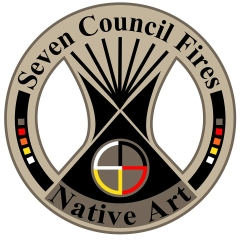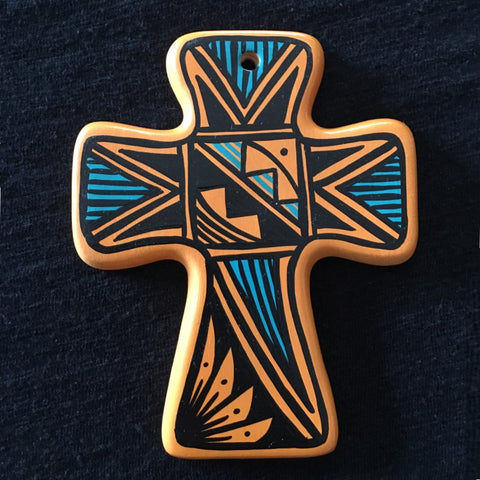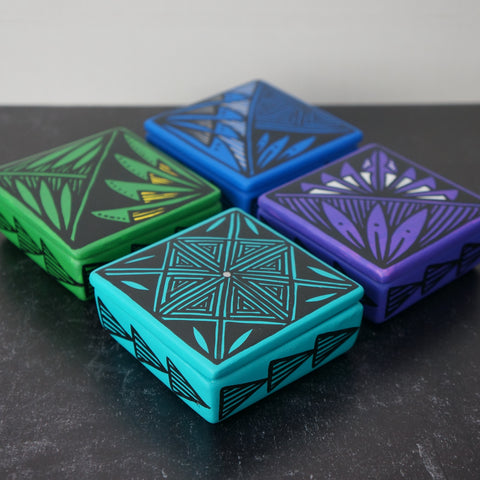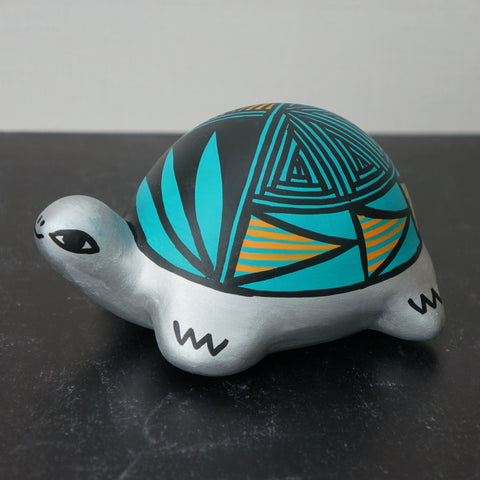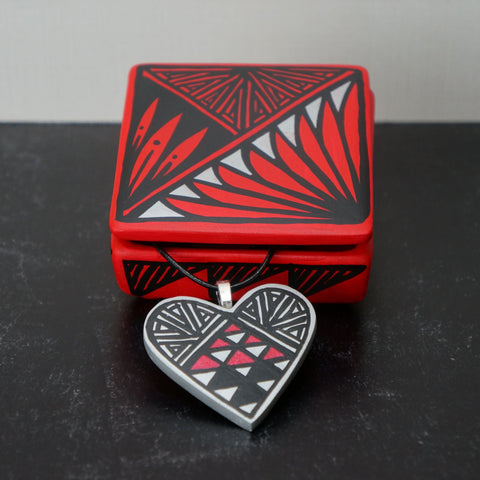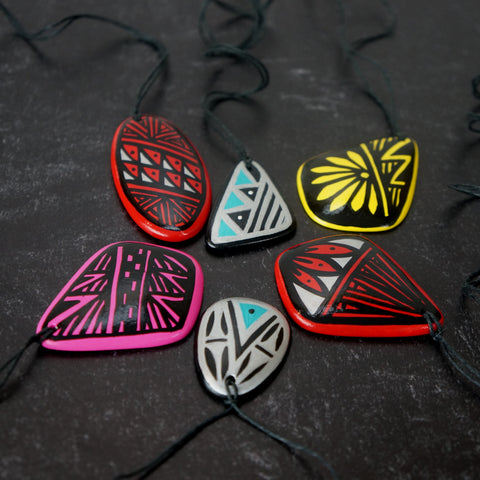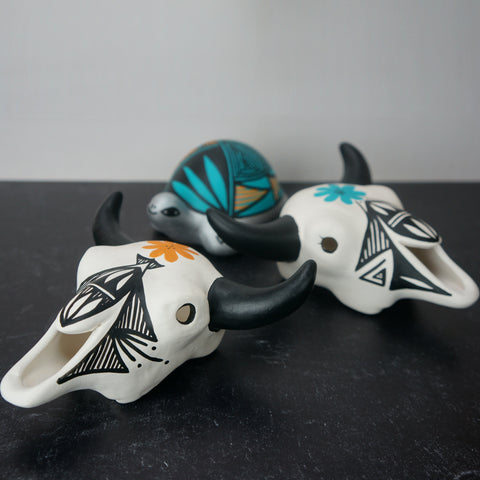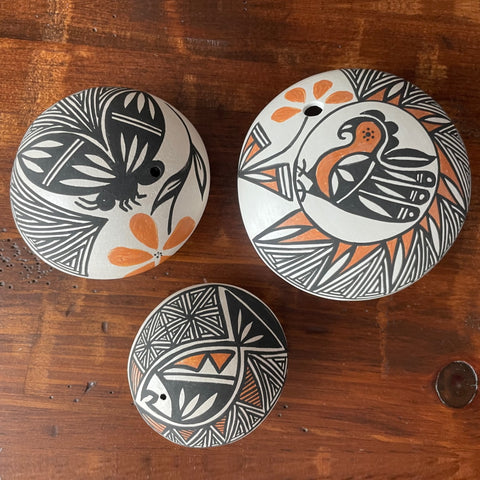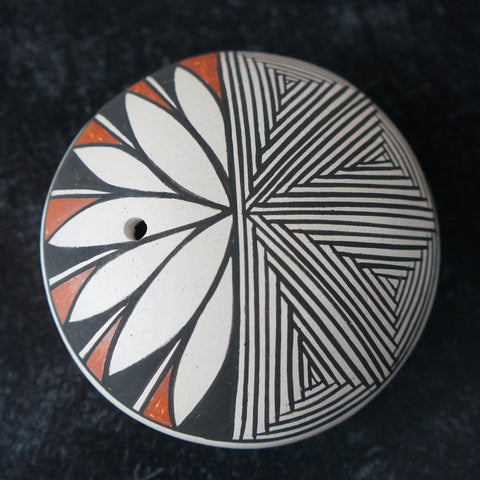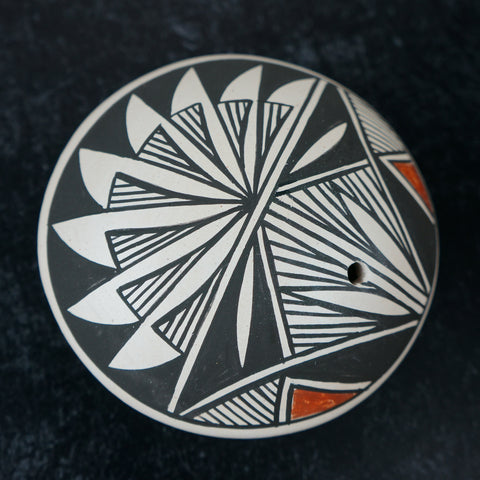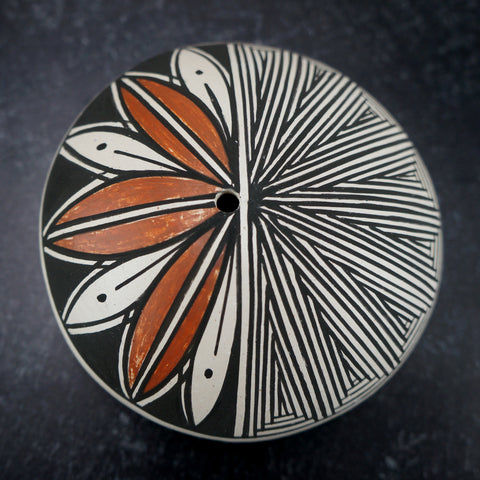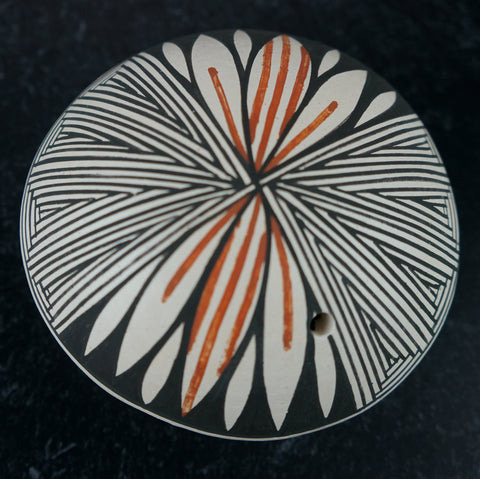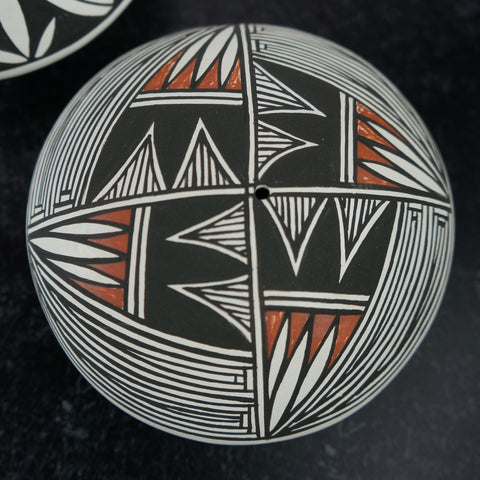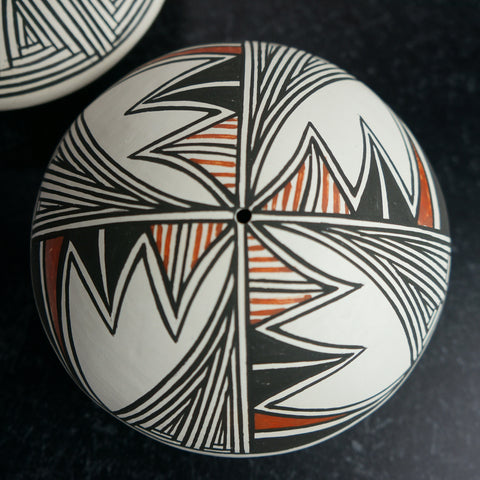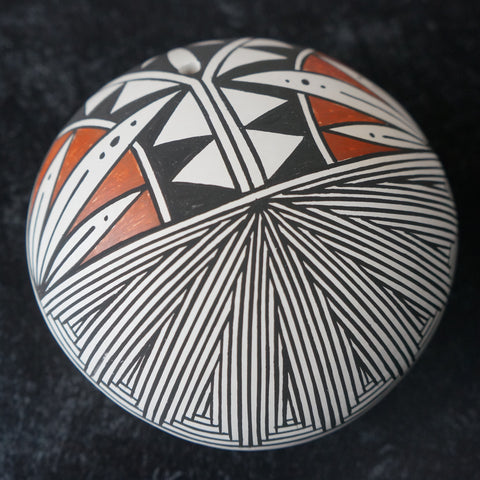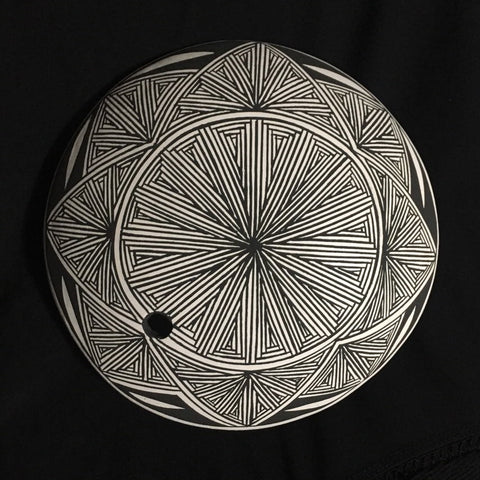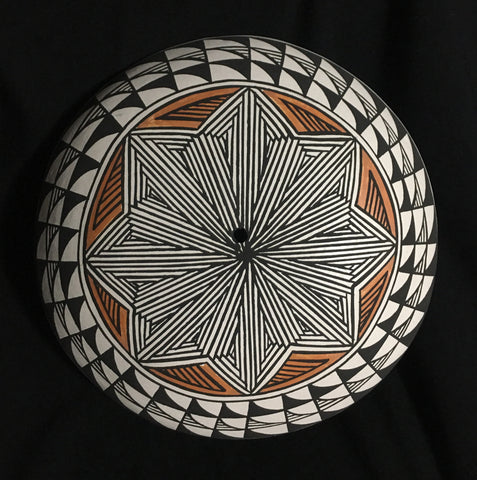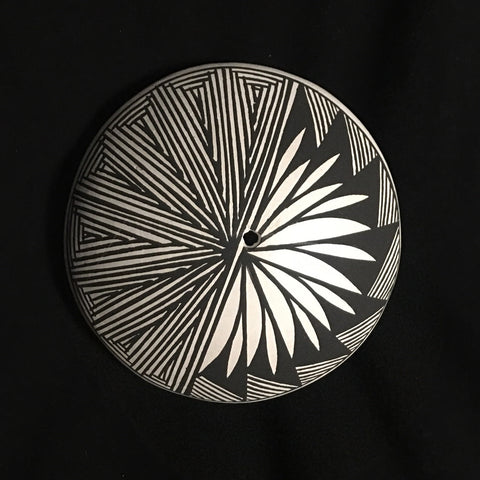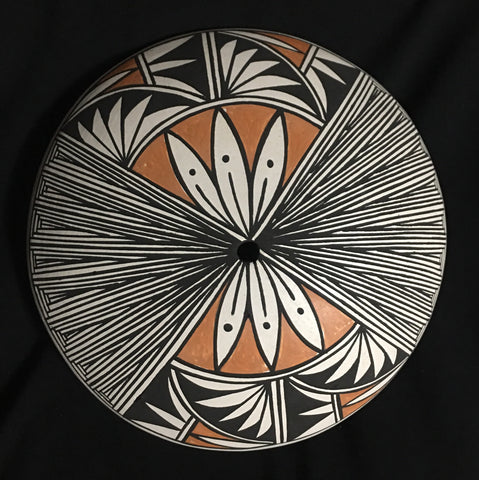Theresa Poncho
Theresa's grinding stone.
Unfinished pot.
Beginning the painting process.
|
Theresa Poncho is a fifth generation traditional Acoma Pueblo potter.
A full blooded Acoma tribal member, she learned pottery from her mother, Dora Antonio, and her father, Felix Poncho Sr.
The specific method for this special pottery has been passed down through Theresa's family, and pottery continues to be their primary source of income.
The clay and paint for her seed pots come from the earth. Mining the clay is very difficult and the traditional process takes a great amount of time and skill. Theresa paints her pieces in the traditional way, using the yucca plant as a paint brush. She chews on the plant to remove the green part, leaving the remaining fibers, which are cut down to the desired size for the pattern being painted.
Seed pots get their name from how they were used traditionally -- for seed keeping. During the harvest, the Acoma people would collect seeds for the next year. When planting season came, the men would take the pots full of seeds to the field. If the seed pots were broken along the way, the pieces were saved and used in the process of making new pots.
Traditionally, seed pots had larger openings that were then covered to protect the seeds from bugs and moisture. These days, the holes are much smaller, making the pots very artful and decorative, and they can still be used to store seeds indoors.
Theresa also works in ceramic, using the yucca paint brush to paint traditional designs in bright colors on pre-made ceramic necklaces, jewelry boxes, turtles and more.
Each piece by Theresa Poncho is unique and never duplicated.
In addition to her art, Theresa has worked as a dental assistant since 2003, helping to support her extended family of six.
Seven Fires Art is honored to present this busy artist's entire catalog.
Working full-time in a dental office, art helps me relax and I find comfort in my art.
Read more about the process…
Mining the special clay for traditional Acoma Pottery is a treacherous endeavor. It involves a nearly five mile walk to a cave that has been mined for many generations and is getting ready to fall. Great care must be taken. A successful mining expedition results in carrying many pounds of clay rock back the five miles.
The rocks are soaked for a couple days until flakey. They are then ground by hand with a grinding stone, and then sifted. Shards of old pottery are always added. Ms Poncho says:
The shards are collected in the mountains. They are from the ancestors, the remnants of the pottery they made and used. The shards are ground separately and added to the clay. This is what keeps the clay together – this is what makes it whole.
A polishing stone is used to make each vessel very smooth. Then three different paints are used: white, black, and yellow. The white paint -itsha- is applied first so that the black paint and the yellow paint will stick.
The yellow paint is mined in the mountains, soaked, strained, and sifted. The color is dull until it is polished and fired. The beautiful, traditional red-orange color doesn’t come out until it’s fired.
Traditionally, pots were fired outside. In this method, cow manure is collected, a pit is dug, and the fires must reach a certain temperature for an extended time. Outside firing is very dependent on the weather. Pieces can easily break, and a little rain can wreck hours of physical, productive, and creative work. Ms Poncho tells us that she wants to finish her works in this traditional way, but with her busy schedule and little desire to risk losing so many pots, she currently uses a kiln for ease, adding that she regrets not having the chance to learn the process from her grandmother.
|
